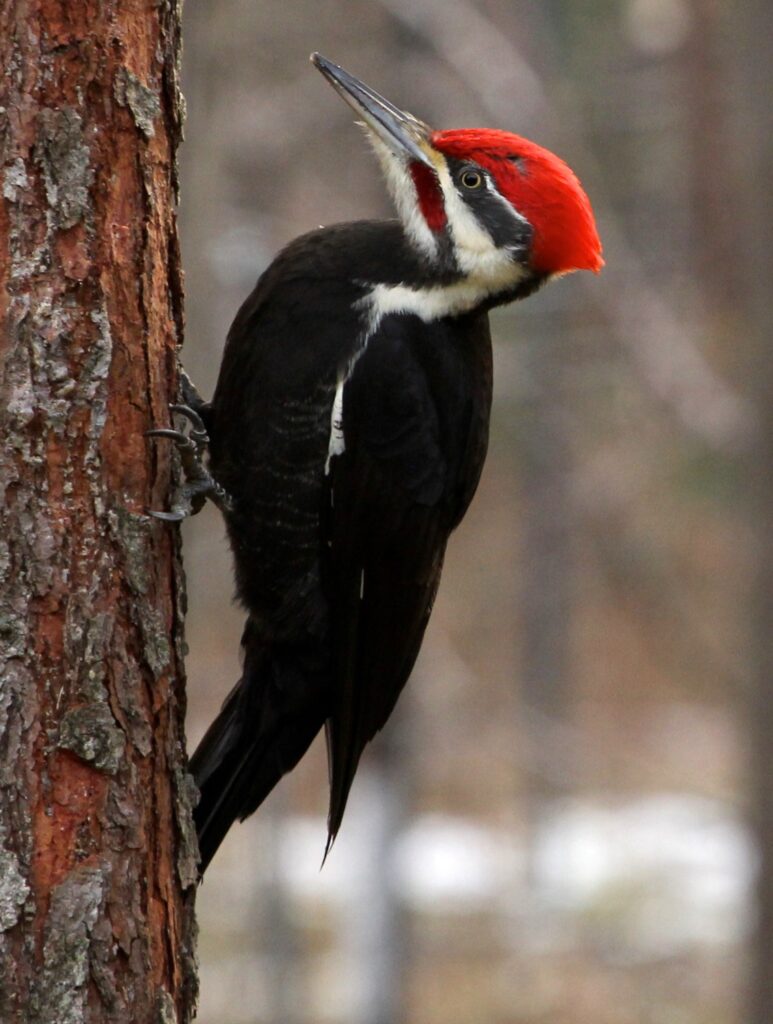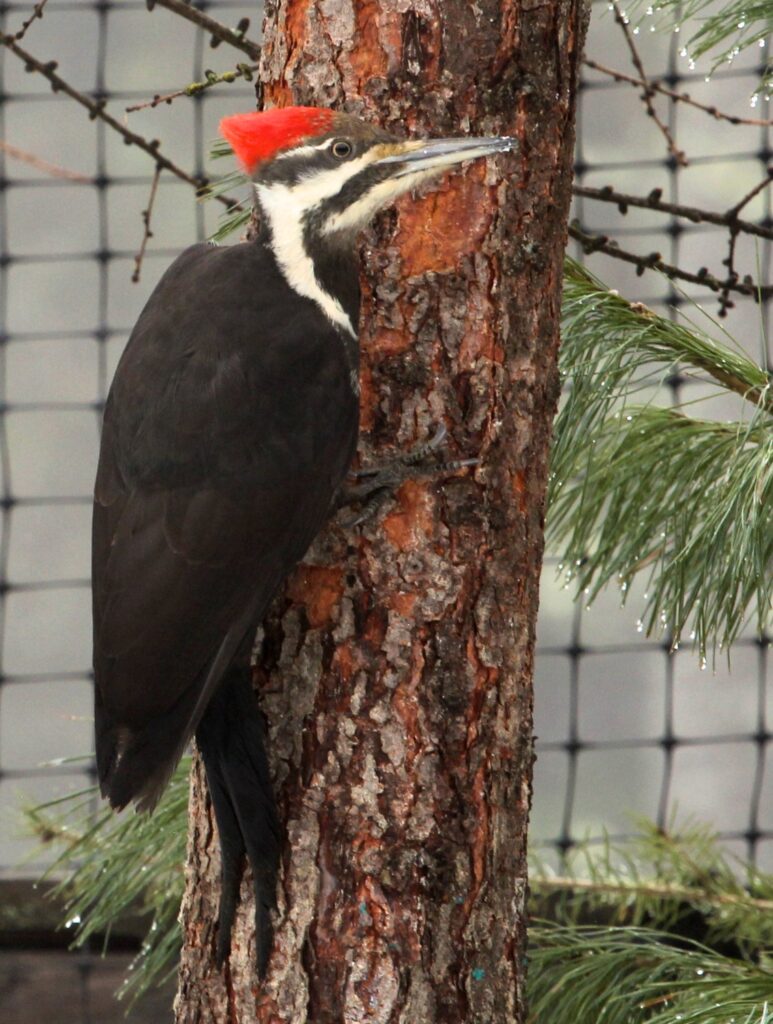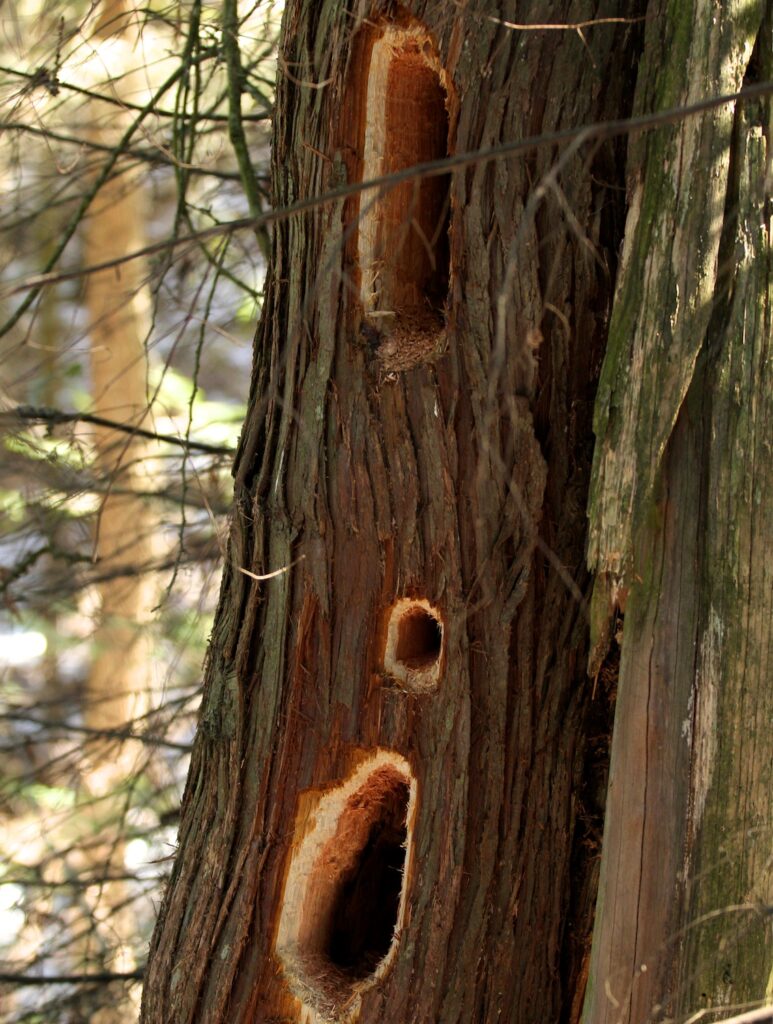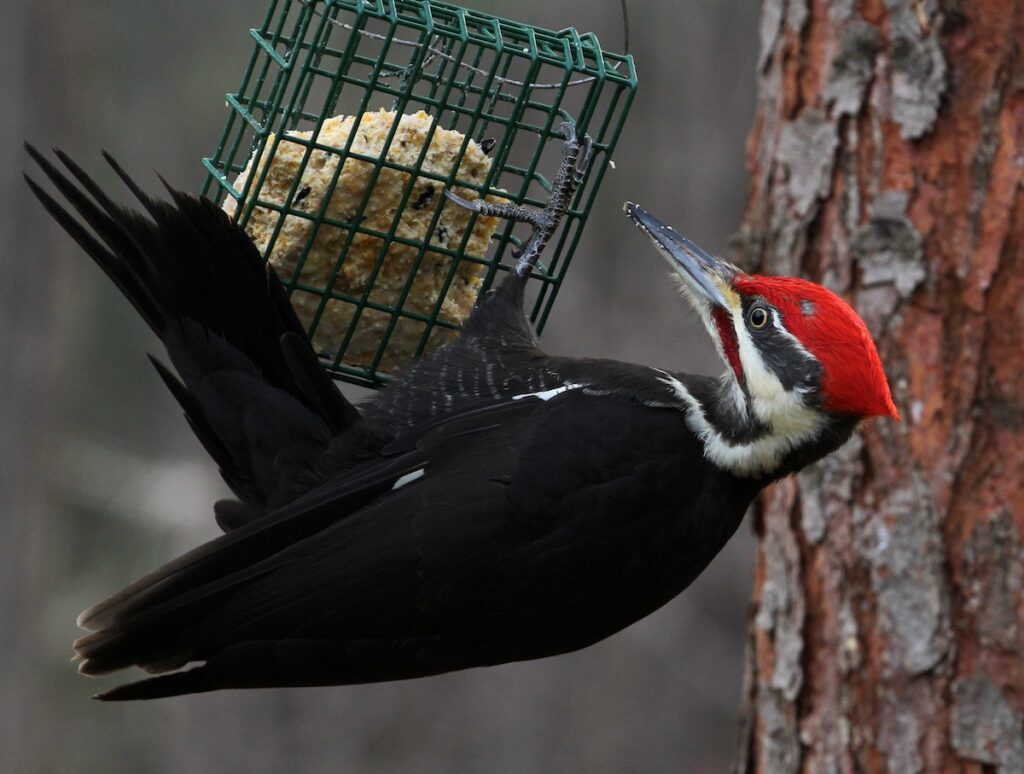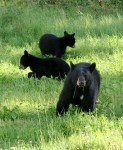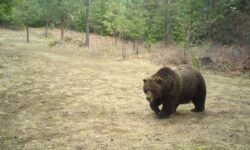Naturally North Idaho is a participant in the Amazon Services LLC Associates Program, an affiliate advertising program designed to provide a means for sites to earn advertising fees by advertising and linking to amazon.com. This post may contain affiliate links, which means I may receive a commission, at no cost to you, if you make a purchase through a link. Please see my full disclosure for further information.
With a bird as big as a Pileated Woodpecker, one would think differences between the male and female were obvious. However, until I read a children’s book, Tea with Lady Sapphire by Carl R. Sams II and Jean Stoick, about a grandma bird-watching with her kids, did I discover there was a difference between the male and the female. Now they are obvious to me.
Telling the difference between male and female
The small difference lies in the mustache and crest.
Male
–Red mustache (stripe across cheek)
-Red crest extends all the way down to bill
Female
–Black mustache
-Red crest doesn’t reach bill
All the other features are the same for the male and female.
-Black and white stripes on face
-Distinctive red crest
-Extensive white underwings
-Heavy, chisel-like bill
How do you tell Pileated Woodpeckers from other woodpeckers?
Pileated Woodpeckers are the largest living woodpecker in North America, nearly three times the size of the Downy Woodpecker according to the Audubon Society. Pileated Woodpeckers range between 15.8 inches and 19.3 inches in length.
A difference in woodpecker holes is that Pileated Woodpeckers excavate rectangular holes compared to round holes by other woodpeckers. The rectangular holes can be up to a foot or longer and go deep into a snag (dead or dying tree).
Pileated Woodpeckers have a distinctive call of loud, escalating shrieks and in flight they produce a series of cuk-cuk-cuk sounds.
Most other woodpeckers drum steadily whereas Pileated Woodpeckers start drumming slowly, accelerate and then trail off at the end according to the Audubon Society.
Where do Pileated Woodpeckers live?
Pileated Woodpeckers live in all types of forest– conifers, deciduous and mixed deciduous-coniferous. However, the forests need large standing dead trees or decaying downed trees for nesting and foraging.
Depending on the forest, a pair of Pileated Woodpeckers needs anywhere from 150-900 acres to raise their young according to the Audubon Society.
What do Pileated Woodpeckers eat?
More than half of a Pileated Woodpecker’s diet can consist of carpenter ants. They also eat fruit, nuts, Emerald Ash Borers, beetle larvae, grasshoppers, spruce budworms, caterpillars and other insects. They also visit suet feeders.
Pileated Woodpeckers are huge compared to a chickadee at a suet feeder but they are amazing to watch- especially when you know a pair is visiting.
Resources:
- https://www.allaboutbirds.org/guide/Pileated_Woodpecker/lifehistory#
- https://www.audubon.org/news/10-fun-facts-about-pileated-woodpecker
Disclaimer: Please note some of the links are affiliate links and as an Amazon Associate, I earn from qualifying purchases through these links. These links help you find products plus support this website. I have purchased and used all of the products and any opinions expressed are entirely my own.

